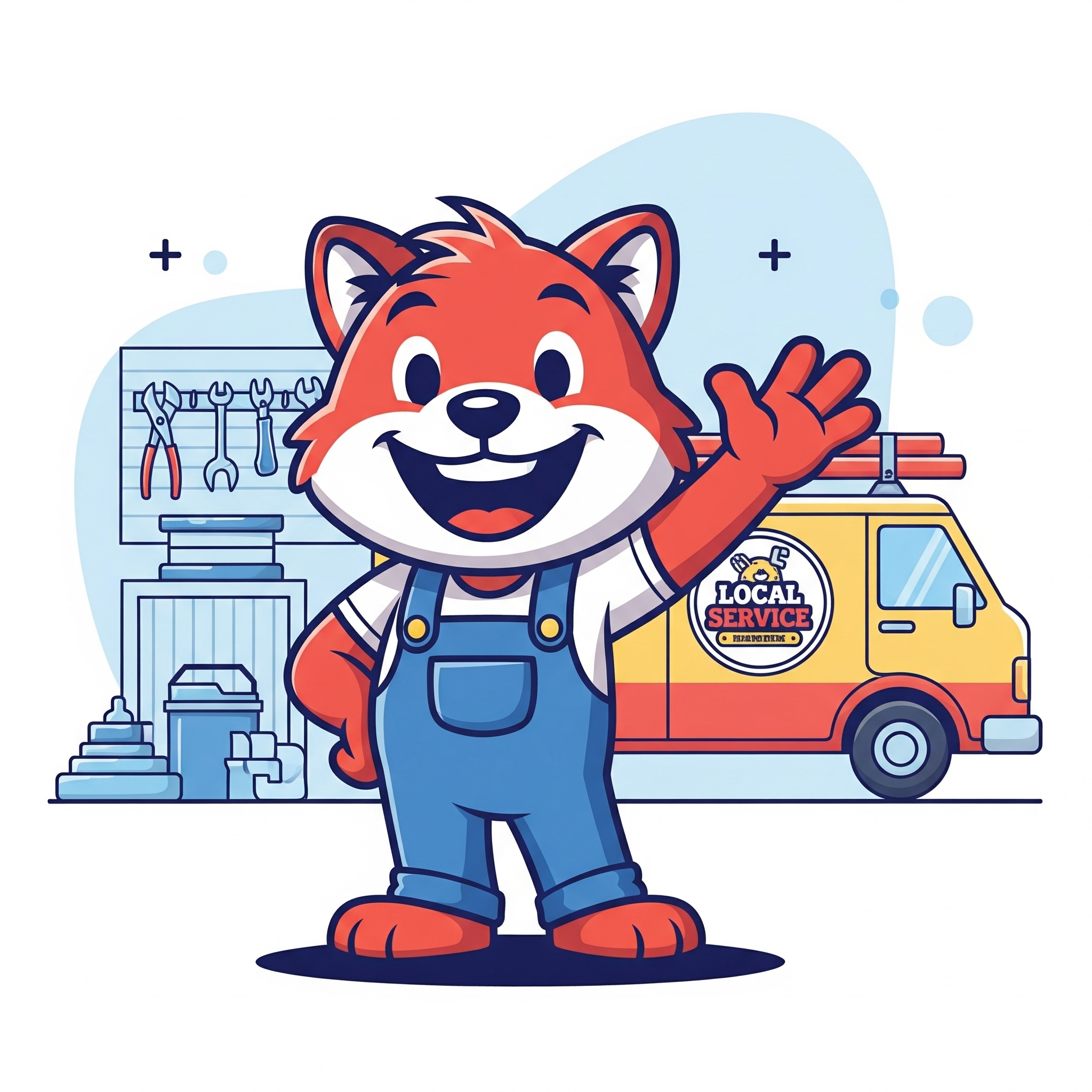If you’re a startup, you know that marketing is essential for success. But with limited time and resources, it can be hard to get a good marketing strategy off the ground. That’s why we’ve put together this guide of DIY marketing strategies for startups. With the right approach and a bit of time, you can create an effective marketing strategy that will help your business reach its goals. So let’s get started!
Key Benefits of DIY Marketing for Startups
If you’re a startup looking to get the word out about your business, DIY marketing can be a great way to get started. DIY marketing is cost-effective and gives you the creative freedom to craft content that reflects your unique brand.
It can be time-consuming, but the payoff can be huge. With DIY marketing, you can create content that speaks directly to your target audience and helps you stand out from the competition. You can also experiment with different types of content, such as videos, podcasts, or blog posts, to see what resonates best with your customers.
By taking a DIY approach to marketing, you can save money, gain creative control, and develop content that speaks to your customers. So don’t be intimidated by the idea of DIY marketing – the rewards can be well worth the effort.
Content Strategies to Launch an Effective DIY Marketing Campaign
When it comes to marketing your startup, it’s important to have a plan in place. Content strategies are a great way to get started. Before you start creating content, you’ll need to do some research on your target audience. What topics are they interested in? What kind of content do they like to consume? Once you have a better understanding of your audience, you can start creating content tailored to their interests.
When creating content, it’s important to keep SEO in mind. Use keywords that your target audience is searching for, and make sure your content is optimized for search engines. You’ll also want to create a content calendar to stay organized and ensure your content is consistent. This will help you stay on track and make sure you’re creating content regularly.
By following these content strategies, you’ll be able to launch a successful DIY marketing campaign for your startup.
Best Practices for Promoting Your DIY Content
If you’re a startup looking to promote your DIY content, you’re in luck. With the right online presence and content strategy, you can get your content out there and start building a following. Here are some of the best practices for promoting your DIY content:
First, use social media to your advantage. Post your content on platforms like Twitter and Instagram to reach a broader audience. You can also use hashtags to make your content easier to find. Additionally, make sure to interact with people who comment on or share your content, as this will help build relationships with potential customers.
Second, create a content strategy. Figure out what kind of content you want to create, how often you want to post, and where you want to post it. This will help you stay organized and consistent. You can also use analytics to track the performance of your content and make adjustments accordingly.
By following these best practices, you can start to build an online presence and gain traction with your DIY content. With a little effort, you can get your content out there and start building a following.
How to Leverage Social Media for DIY Marketing
Are you a startup looking for ways to get the word out about your business on a budget? Social media can be a great tool for DIY marketing and organic growth. Investing in influencers to promote your product or service can be an effective way to reach a larger audience. Content marketing is also key to establishing your brand and building relationships with potential customers. Creating valuable content that your target audience will find useful can help you build trust and loyalty. By leveraging the power of social media, you can get your message out to a larger audience and grow your business.
Analyzing the Results of Your DIY Marketing Efforts
When it comes to DIY marketing strategies for startups, tracking and analyzing the results of your efforts is key to success. Measuring the success of your campaigns lets you know what’s working and what’s not, so you can make adjustments and maximize your ROI. There are a few key metrics you can use to measure the success of your campaigns.
First, track the number of website visitors and leads generated from each campaign. This will help you identify which channels are generating the most traffic and leads. You can also track the number of conversions from each campaign to see which ones are driving the most sales. Finally, measure the return on investment (ROI) of each campaign to get an idea of how much revenue each one is generating.
By tracking, analyzing, and measuring the success of your DIY marketing campaigns, you’ll be able to identify what’s working and make adjustments to maximize your ROI. You’ll be able to focus your efforts on the campaigns that are driving the most traffic, leads, and sales for your business.
In conclusion, DIY marketing is a great way for startups to get their name out there without breaking the bank. With the right strategies and best practices, startups can create effective content and leverage social media to promote it. Additionally, it’s important to analyze the results of your DIY marketing efforts to ensure that you’re getting the best return on your investment. By following these tips, startups can get the most out of their DIY marketing campaigns. So get out there and start spreading the word about your business!
Frequently Asked Questions
What are the key benefits of DIY marketing for startups?
DIY marketing for startups has many benefits, including cost savings, more control over messaging, and the ability to develop a unique brand identity. DIY marketing also allows startups to quickly test different marketing strategies and adjust their approach as needed. Additionally, DIY marketing gives startups the chance to develop relationships with their target audience and build a loyal customer base.
DIY (Do It Yourself) marketing can offer several key benefits for startups:
- Cost-Effective: Startups often operate on tight budgets, and DIY marketing can significantly cut down costs. Instead of hiring an expensive marketing agency, startups can use free or low-cost marketing tools available online.
- Full Control: DIY marketing gives startups full control over their marketing strategy. They can make changes instantly, test new ideas, and pivot quickly if something isn’t working.
- Learning Experience: By managing their own marketing, startups can gain a deep understanding of what works and what doesn’t for their specific business. This learning can be invaluable as the company grows.
- Flexibility: DIY marketing allows for flexibility. Startups can experiment with different strategies to see what works best. They can easily adapt their marketing efforts to the evolving needs of their business.
- Personal Touch: Startups can add a personal touch to their marketing efforts that might not be possible when outsourcing. This can help in building a strong connection with their audience.
- Quick Implementation: Without the need to go through a third party for approval or execution, startups can implement marketing campaigns quickly, reacting to market trends or business needs in real time.
Keep in mind that while DIY marketing has perks, it requires time and effort. Ensure key team members have the necessary skills to handle your marketing efficiently.
While DIY marketing offers advantages for startups, acknowledge the notable drawbacks too.
- Lack of Knowledge and Experience: Without a background in marketing, it might be difficult for startups to effectively strategize and implement marketing plans. This can lead to ineffective campaigns or even harm the brand image.
- Time Consuming: DIY marketing requires a significant investment of time. For busy startups, this could mean less time spent on other important aspects of the business.
- Hidden Costs: While DIY marketing can save on upfront costs, there may be hidden expenses. Mistakes made due to lack of knowledge or experience can be costly to fix.
- Limited Resources: Startups may lack the tools and resources that a professional marketing agency would have. This could limit their marketing capabilities.
- Difficulty Building Trust: With DIY marketing, there can be minimal face-to-face interaction with customers, which might make it harder to build trust and establish a strong brand presence.
- Timeliness and Relevance of Results: Without expertise in analyzing marketing data, it could be challenging for startups to understand the results of their campaigns and adjust strategies in a timely manner.
- Risk of Neglect: Just like an untended garden, a neglected marketing campaign can grow problems over time. If the necessary time and effort aren’t devoted to the marketing efforts, it could lead to issues like outdated content, missed opportunities, or inconsistent branding.
Sources:
What content strategies should I use to launch an effective DIY marketing campaign?
When launching a DIY marketing campaign, it’s important to create content that is relevant to your target audience, engaging, and shareable. Consider creating blog posts, videos, podcasts, infographics, and social media posts that are tailored to your target audience’s interests and needs. Additionally, be sure to optimize your content for search engines so that it can be easily found by potential customers.
Launching an effective DIY marketing campaign requires a thoughtful approach and a blend of different content strategies. Here are some strategies you might consider:
- Know Your Audience: Before creating any content, it’s crucial to understand who your audience is. What are their interests, needs, and challenges? Use this information to create targeted content that will resonate with them.
- Create High-Quality Content: Quality trumps quantity. It’s better to produce fewer pieces of high-quality content than to churn out lots of low-quality posts. High-quality content can help establish your brand as a trusted source of information, which can lead to increased customer loyalty and higher conversion rates.
- Leverage Different Content Formats: Don’t limit yourself to just blog posts or articles. Different types of content can appeal to different segments of your audience. Try incorporating videos, infographics, podcasts, webinars, eBooks, or social media posts into your content strategy.
- SEO Optimization: Use keyword research tools to identify keywords relevant to your business and incorporate them into your content. This can help improve your website’s visibility on search engines and drive more organic traffic to your site.
- Consistency is Key: Regularly publishing fresh content can help keep your audience engaged and improve your SEO rankings. Develop a content calendar to ensure you’re consistently producing new content.
- Promote Your Content: Once you’ve created your content, don’t forget to promote it. Share it on your social media channels, send it to your email list, or use paid advertising to reach a larger audience.
- Measure and Adjust: Use analytics tools to track the performance of your content. This can provide valuable insights into what’s working and what’s not, allowing you to adjust your strategy accordingly.
Remember, effective content marketing is a long-term strategy. It may take time to see results, but with persistence and consistency, your efforts can lead to significant growth for your startup.
What are some best practices for promoting my DIY content?
To promote your DIY content, start by sharing it on your social media channels. Additionally, consider reaching out to influencers in your industry to share your content. You can also use paid advertising on social media or search engines to reach a larger audience. Finally, be sure to monitor the performance of your content and adjust your approach as needed.
Promoting DIY content effectively requires a well-planned strategy. Here are some best practices:
- Use Social Media: Share your content on various social media platforms like Facebook, Twitter, LinkedIn, Instagram, and Pinterest. Each platform has unique features and audience demographics, so tailor your content accordingly.
- SEO Optimization: Make sure your content is optimized for search engines. Use relevant keywords, meta descriptions, and tags to improve your content’s visibility in search engine results.
- Email Marketing: Build an email list and send out newsletters featuring your latest content. This can be a great way to keep your audience engaged and drive traffic to your website.
- Collaborate with Influencers: Partnering with influencers in your niche can help you reach a larger audience. They can share your content with their followers, giving it more exposure.
- Guest Blogging: Write guest posts on other relevant blogs or websites. This can help you reach a new audience and also improve your SEO by providing backlinks to your site.
- Engage with Your Audience: Respond to comments and messages, ask for feedback, and create interactive content like polls or quizzes. Engaging with your audience can build relationships and increase loyalty.
- Paid Advertising: Consider using paid advertising on social media or search engines to reach a larger audience. This can be especially useful when you’re just starting out and don’t have a large following yet.
- Consistency is Key: Regularly produce and promote content. Consistency not only helps in building an audience but also signals to search engines that your site is active, which can improve your SEO.
- Repurpose Content: Turn your content into different formats, such as videos, podcasts, infographics, or social media posts, to reach different audiences and maximize exposure.
- Analyze and Adjust: Use analytics tools to track the performance of your content promotion efforts. Use this data to adjust your strategy as needed.
Remember, effective promotion takes time and effort, but with a strategic approach, you can maximize your content’s reach and impact.
How can I leverage social media for DIY marketing?
Social media is an effective tool for DIY marketing. Start by creating accounts on the most popular social media platforms and connecting with your target audience. Post regularly and use hashtags to reach a larger audience. Additionally, consider using paid advertising on social media to reach more people.
Using social media for DIY marketing is an effective way to reach and promote to your target audience with these strategies:
- Understand Your Audience: Knowing who your audience is crucial for a successful social media strategy. Understand their interests, behaviors, and the type of content they engage with most. This will allow you to tailor your content to meet their needs and interests (Source: Hubspot).
- Diversify Your Channels: Don’t limit yourself to just one social media platform. Different platforms attract different demographics and offer various features that can be used to engage with your audience. Utilize multiple platforms to reach a wider audience and promote your content (Source: Hubspot).
- Engage with Your Audience: Social media is not just about promoting your products or services; it’s also about building relationships with your audience. Engage with your followers by responding to comments, asking for feedback, and creating interactive content like polls or quizzes (Source: MB Consulting Co).
- Set Clear Goals: Establish clear objectives and goals for your social media strategy. This could be increasing brand awareness, driving traffic to your website, or improving customer engagement. Having clear goals will help you measure your success and adjust your strategy as needed (Source: Hootsuite).
- Use Social Media Advertising: Social media platforms offer various advertising options that can help you reach a larger audience. These can be cost-effective ways to promote your products or services to your ideal customers (Source: Shopify).
- Create a Social Media Marketing Strategy: Having a well-planned strategy is key to success in social media marketing. This should include the types of content you plan to post, when and how often you’ll post, and how you’ll engage with your audience (Source: Business News Daily).
Remember, social media marketing is not a one-size-fits-all approach. What works for one business may not work for another. It’s important to test different strategies and adjust your approach based on what works best for your business.
How can I measure the success of my DIY marketing efforts?
To measure the success of your DIY marketing efforts, track key metrics such as website traffic, engagement, leads, and conversions. Additionally, consider using analytics tools to gain insights into how users are interacting with your content. Finally, measure the ROI of your campaigns to determine which strategies are most effective.
Measuring the success of your DIY marketing efforts can be accomplished through several key performance indicators (KPIs) and metrics:
- Website Traffic: One of the most fundamental metrics, tracking the number of visitors to your website can provide insights into the effectiveness of your marketing efforts. You can also look at metrics like page views, time spent on site, and bounce rate.
- Social Media Engagement: Monitor likes, shares, comments, and followers on your social media channels. These metrics can help you gauge your audience’s interest and engagement with your content.
- Email Marketing Metrics: Open rates, click-through rates, and conversion rates from your email campaigns can provide valuable feedback on the effectiveness of your messaging and targeting.
- Lead Generation: Keep track of the number of new leads generated. This could be measured by the number of form submissions on your website, email list sign-ups, or inquiries about your product or service.
- Conversion Rate: This is the percentage of visitors who take a desired action on your site, such as making a purchase, filling out a form, or subscribing to a newsletter. A higher conversion rate often indicates successful marketing efforts.
- Customer Acquisition Cost (CAC): This is the total cost of acquiring a new customer, including all marketing and sales expenses. A lower CAC indicates more efficient marketing efforts.
- Return on Investment (ROI): Ultimately, the success of your marketing efforts can be measured by ROI. This metric helps you understand the profitability of your marketing efforts by comparing the profit made to the amount spent.
- Customer Lifetime Value (CLV): This is a prediction of the net profit attributed to the entire future relationship with a customer. If your CLV is rising, your marketing efforts could be succeeding in terms of long-term growth.
Remember, the specific metrics that matter will depend on your unique business goals. It’s important to identify these goals at the outset and align your measurement strategy accordingly. Tools like Google Analytics, social media analytics, and CRM software can help you track these metrics effectively.
Sources:
What tone of voice should I use when creating DIY content?
When creating DIY content, it’s important to use a casual and friendly tone of voice that resonates with your target audience. Avoid using overly technical language and be sure to keep your content concise and easy to understand.
The tone of voice you use when creating DIY content for your business should align with your brand identity and resonate with your target audience. Here are some tips to help you define the right tone:
- Understand Your Brand: If your brand were a person, how would it speak? Is it formal or casual? Is it friendly or authoritative? Understanding your brand’s personality can help you determine the appropriate tone of voice.
- Know Your Audience: The tone of voice should also be tailored to your audience. If your audience is young and tech-savvy, a casual and conversational tone might work well. If your audience is more professional, a formal and informative tone may be more appropriate.
- Be Consistent: Once you’ve defined your tone of voice, use it consistently across all content and platforms. This can help reinforce your brand identity and make your brand more recognizable.
- Stay Authentic: Authenticity can help build trust with your audience. Don’t try to mimic another brand’s tone of voice or pretend to be something you’re not.
- Keep It Clear and Simple: Regardless of the tone you choose, your message should always be clear and easy to understand. Avoid jargon and complex language that could confuse your audience.
Remember, your tone of voice is an important part of your brand identity. It can help differentiate your brand from competitors, build a stronger connection with your audience, and influence how your brand is perceived.






